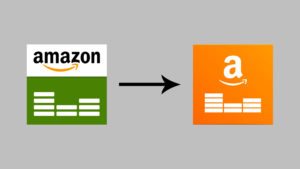
Suppressed product listings are part of a widespread effort by Amazon to clean up its growing product catalog. The instance of suppressed listings mostly happens on the third-party Amazon Marketplace, also referred to as the 3P e-commerce platform where independent sellers generate their own Amazon Standard Identification Numbers (ASIN) when they add their product catalogs.
ASIN suppression can happen for various reasons. The most common is to prevent duplicate listings. In general, Amazon explains that the company reserves the right to suppress ASINs that result in a diminished customer experience. The problem usually occurs when Amazon’s algorithms determine that information provided by sellers is incorrect or invalid.
Here are some other reasons Amazon mentions with regard to suppressed ASINs:
- Lack of Main Product Images
Most products offered to American shoppers should feature the main image; the only exceptions are for products that fall under categories such as auto parts, books, software, video games, music, and others.
- Invalid Categories
Items listed in the United States version of the 3P marketplace must have a value in the product category field.
- ASIN Could Not Be Merged
Amazon deploys algorithms that look for certain product information that determines a listing could be a duplicate, which usually leads to an automatic merging of ASINs. If for some reason this determination is not conclusive, the ASIN is suppressed and the affected seller gets an alert.
- Excessive Negative Reviews
When a flurry of shoppers leaves negative reviews for products listed on the Amazon Marketplace, ASIN suppressions will follow.
How Can Sellers Deal with Suppressed ASINs?
Sellers can address suppressed ASINs from the Manage Inventory screen in their Seller Central accounts. The option can be selected from the “Fix Suppressed Listings” option on the navigation bar to the left of the screen.
The ability granted by Amazon to sellers to add or edit product listings is one of the issues that can trigger automatic ASIN suppressions. If you have successfully generated ASINs for unique products without getting suppression notices, chances are that other sellers are responsible. Unfortunately, Amazon provides too much flexibility in terms of being able to edit ASINs, and this can result in unjustified suppressions.
Opening a Seller Support Case
Let’s say you are trying to sell laptop-carrying bags that you have purchased from a manufacturer in Taiwan whose company you found on the Alibaba.com marketplace. After making certain that this product is not being offered on the Amazon Marketplace, you brand the laptop bags and obtain Universal Product Codes from GS1 for the purpose of creating new and unique ASINs. Your laptop bags are selling well and getting positive reviews; you even consider looking at more items offered by your manufacturer to extend your selling range, but one day you receive an ASIN suppression notice, which means that your laptop bag listing is no longer visible to shoppers even though it appears as active in your Manage Inventory screen.
More than likely, the aforementioned suppression involves a rogue seller who wants to piggyback on your ASIN by offering similar laptop bags, which can either be unbranded or counterfeit. This is an example of an unjustified ASIN suppression, for which you should open a case with Amazon Seller Support.
How to Ensure Your ASINs are Protected
When you notify Seller Support about the issue, you will be required to present proof that your ASIN has been compromised by some third-party seller. If you leave it up to Amazon representatives to investigate, it could take a while for the suppression to be lifted. With Brandlox, Amazon sellers who have created 10 or more new ASINs are notified when third parties are trying to list or otherwise modify products, and their actions are documented. To learn more about how Brandlox can help you with ASIN suppression issues, contact our e-commerce consultants today.
